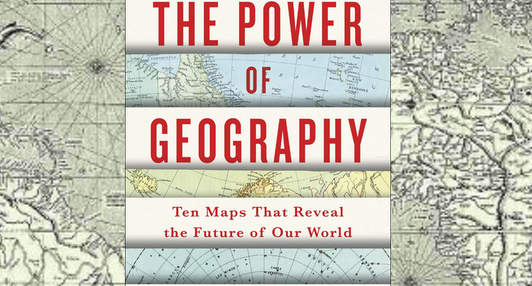By Tim Marshall
Tim Marshall’s “The Power of Geography: Ten Maps that Reveal the Future of Our World” presents a thought-provoking exploration of ten global regions that the author identifies as potential focal points for future geopolitical tensions. As an experienced British author and journalist with a remarkable career spanning over 30 years, Marshall draws on his extensive background in reporting from conflict zones and more than 40 countries to provide a compelling analysis of the profound impact that geography continues to exert on shaping our world.
This book serves as a sequel to Marshall’s earlier work, “Prisoners of Geography,” where he delves into the constraints imposed on countries by their geographical locations. In “The Power of Geography,” Marshall adopts a fresh perspective, examining ten diverse regions, including Australia, Iran, Saudi Arabia, the United Kingdom, Greece, Turkey, the Sahel, Ethiopia, Spain, and even outer space. Each region is dissected in terms of its borders, geographical features, and a chronological exploration of its history from inception to the present day.
Marshall’s book stands out due to its diverse selection of locations and the wide array of factors he deems significant. From tensions over water control between Ethiopia and Egypt to land disputes involving Turkey and Greece over Cyprus, and the examination of geographical divides within the United Kingdom and Spain, Marshall covers a broad spectrum of issues with global repercussions or the potential to become international flashpoints.
While the book is compelling, it does have limitations. Marshall’s decision to focus on ten locations limits the depth of exploration in certain regions, opting for broad overviews instead. Additionally, although he acknowledges the relevance of the Arctic, United States, China, and Russia, he does not dedicate specific chapters to these regions, which might be considered more pertinent given the contemporary geopolitical landscape.
Nevertheless, “The Power of Geography” is exceptionally readable, characterized by Marshall’s concise and focused narration. The book strikes a balance by providing enough detail for readers to grasp a comprehensive understanding of each location without overwhelming them with unnecessary jargon. Marshall’s storytelling finesse makes the book accessible to a broad audience, appealing to those interested in geopolitics, international relations, or individuals seeking insights into current and potential future areas of concern.
In conclusion, Tim Marshall’s “The Power of Geography” is recommended reading for anyone intrigued by geopolitics or international relations. It serves as a valuable resource for those looking to build a foundation in understanding strategically significant locations globally. Military officers transitioning to operational or strategic assignments could particularly benefit from Marshall’s insights, as he adeptly examines the past, present, and future of the world through a geopolitical lens.
